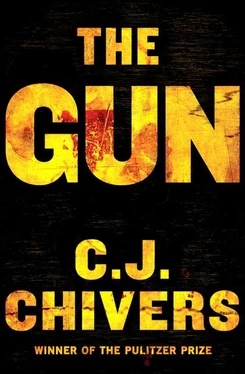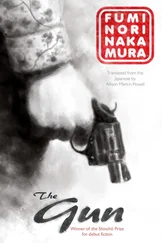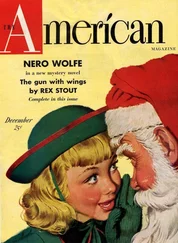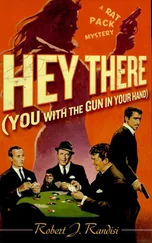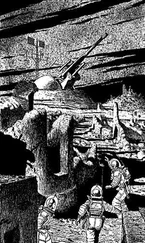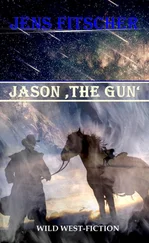I saw him make my brows very thick and protested half in jest: “What do I need brows like Brezhnev’s for?” “Brezhnev has nothing to do with it,” the sculptor tried to explain amicably to me. “Such brows are indicative of constant strain of thought.”
Such was Kalashnikov’s world, the Soviet Union of the 1970s, a system in which the habit of kowtowing was ingrained even in the sculptor’s hands, and those enjoying its perks had casually, even cheerfully, accepted the strange rules. “I laughed merrily,” Kalashnikov wrote. “‘Couldn’t you relieve me of this strain?’” 18His bust was completed, bearing brows like those of the general secretary. It was placed on a pedestal in Kurya, the village from which the Kalashnikov family had been cast out during collectivization and sent into exile. 19
By the 1970s, the Eastern bloc arms stores were proving to be of limited Cold War use, and the risks of the stockpiles and of greater assault-rifle distribution were becoming discernible. The war the rifles were to help the Kremlin win was not fought by the means the stockpilers had planned, and the armories stood as powerful attractants for all manner of opportunists. Illicit diversion was a natural risk. The pulls and pushes of demand and supply, along with ample precedents of diversions and their consequences, were in view. Three examples were instructive: the movement of firearm stocks left from World War II; the introduction of assault rifles to Uganda, where the government fell; and the assassination in 1981 of the president of Egypt, Anwar Sadat.
The bountiful trade in infantry rifles and machine guns assembled for World War II provided a useful precedent for understanding what was ahead. The war had pushed large quantities of military firearms around the globe, and when the fighting ended many governments were left with surpluses, sometimes staggering surpluses. For conventional forces, these excess weapons quickly became obsolete. In the arms-race climate of the Cold War, Western and Eastern armies adopted new standard cartridges and updated their standard arms. Where did the earlier generations of weapons go? Not into foundries. Some went into storage sites like the salt mines below Artemosvk. Others went to markets, wherever markets were. And once they entered markets, they turned up in conflicts everywhere. The gun-running business was often quiet and opaque, but one private dealer of the era, Samuel Cummings, an American who decamped for Europe and made his fortune brokering deals, granted moments of transparency. In the mid-1970s, Cummings, by then a minor tycoon, offered a tour to a British journalist of part of his arsenal, and explained how small arms move liquidly from fight to fight.
Here, he points out, is a stack of American Garand rifles which were first exported to Germany in the ’fifties for the first German rearmament. When Germany got more advanced weapons they were transported to Jordan in the late ’sixties, and when Jordan got more advanced weapons they were bought by Cummings and shipped to Manchester. From there many of them were shipped to the Philippines, to help fight Moslem rebels financed by Libya, while a few remain in Manchester waiting for customers. Here, just next door to the Garands, are some British Enfield rifles which were captured by the Japanese in Indo-China, then taken over by the Americans and used in Vietnam, before they were bought by Cummings. Here are some Springfield rifles which were first supplied to the French in Indo-China in the ’fifties. Here are Mausers which were brought over to Taiwan by General Chiang Kai-shek when he left the mainland in 1949. Over there are German ME42 guns which were left by Hitler’s troops in Greece, Swedish guns made under license in Egypt and captured by the Israelis, British Sten guns dropped by parachute during the Second World War for the French Maquis, American Brownings for the Dominican Republic, Belgian Mausers from Venezuela, American M16s from the Chilean Army…. Cummings knows that his arsenals depend for their stocks on the aftermath of wars.
Cummings, in one of his signature one-liners, declared the flow of arms “an index of the world’s folly.” 20Folly interested Cummings, and he made sure to read it well, because the business opportunities it presented interested him even more. What Cummings understood, and what his guided tour showed, was the durable nature of demand in a world in which the next local struggle was always about to start somewhere, and in which whenever one combatant adopted a new rifle its opponents wanted upgrades, too. There were almost always customers—if the price was right, the supply could be found, and weapons unneeded in one place could be married with a purchaser someplace else. If, as Cummings implied, today’s arsenals depend on their stocks from the aftermath of yesterday’s wars, then the Cold War had provided the biggest boon of all. Socialist stockpiling served as an immeasurably large, if latent, source of future supply—the greatest supplies yet. Cummings grasped this last point, too. He marveled at the appeal and practical merits of the Kalashnikov line, compared to what else was available. “If I was a Marine in Vietnam and was given one of those new ArmaLites,” he said, during the height of the M-16 scandal in Congress, “I’d throw it away and say I’d lost it and try to get one of the Russian rifles off a dead V.C. They’re the best.” 21
In his breezy and informed way, Cummings offered insights into private networks eager to move Kalashnikovs when the rifles became available. Idi Amin, in Uganda, offered a peek at a cruder form of transfer, which would be a factor in small-arms proliferation, too. Amin, a hulking career army officer, seized power by coup in Kampala in 1971. He was an outrageous character, a boxing champion and rugby player whose flamboyance and ease with spilling blood contributed to what became his international persona: brutish dictator and murderous buffoon. Some of those who knew him as a younger man, before his sadistic streak had manifested itself in wholesale executions, saw him as stupid, “a splendid type and a good player, but virtually bone from the neck up, and needs things explained in words of one letter.” 22But he possessed a viciousness, like Stalin’s, that was chilling when connected to power. During more than eight years as head of state, Amin squirreled away weapons with the help of the Kremlin, East Germany, and Libya, and applied his soldiers’ firepower advantage to the tasks of thwarting rivals and repressing Uganda’s population. Amin relied on the tools of the purge: large-scale arrests of civil servants and suspected guerrillas and their supporters, followed by imprisonment without trial, torture, and extrajudicial killings, often by firing squads, sometimes by hammer blows. Like many despots, he overreached. As resentment and fear exhausted Uganda, he annexed a portion of neighboring Tanzania, triggering events that chased him from the presidential suite. Tanzania’s army and a coalition of anti-Amin guerrilla groups invaded. Amin bolted. The disappearance of a commander in chief is never a good sign in a military government, and the Ugandan army took its cue from the boss. Officers and troops disappeared from many barracks. What happened next pointed to the risks ahead in Europe when communist nations crumbled from within.
In the northeastern region of Moroto, Ugandan troops vacated their garrison, leaving behind an armory. Moroto was inhabited by the Karamojong tribe, traditional herders who roamed the countryside in search of water and forage for their livestock. Their region was formally Ugandan but never fully under Ugandan control, and as a seminomadic people, many Karamojong saw themselves as unincorporated. They had paid for this perceived backwardness and disloyalty at the hands of Amin and his government. After the evaporation of the army at Moroto, local men looted the base and relieved it of weapons. This marked a consequential rearrangement. The Karamojong were already accomplished cattle rustlers, and with their newly acquired Kalashnikovs they could raid their neighbors’ herds with heretofore unimaginable ease. The qualities that made a Soviet conscript with an AK-47 much more formidable than a Soviet conscript with a Mosin rifle or PPSh translated seamlessly to the business of rustling. But there was a difference. The introduction of Kalashnikovs to the Karomojong multiplied their firepower by a much larger factor than had the introduction of AK-47s to Soviet infantry squads, because the rustlers were not graduating from rifles and submachine guns. They were moving up from spears. In the ensuing years, traditional Karamojong power arrangements eroded, and the elderly leaders were supplanted by younger men leading bands of rustlers equipped with assault rifles. Warlords became a force. Karamojong raiding parties set upon their neighbors and claimed herds owned by the Iteso and Acholi people. Before the raids, the Acholi had three hundred thousand cattle. By 1997 many Acholi switched to raising donkeys. Their cattle holdings shrank to five thousand. Government efforts to control the Karamajong proved insufficient. Upheavals in Rwanda and Congo, and the eruption of an unrelated Acholi insurgency, brought more Kalashnikovs into the country. A local arms race matured. Attempts to restrict the flow of assault rifles were futile. The Ugandan government chose a new strategy. Hoping to co-opt some of the warlords and to create an informal buffer against the expanding Acholi insurgency, it urged Karamojong men to register their rifles in return for monthly stipends of about ten dollars. 23What had been illegal in Uganda had become so entrenched that policy now sanctioned it with cash.
Читать дальше
